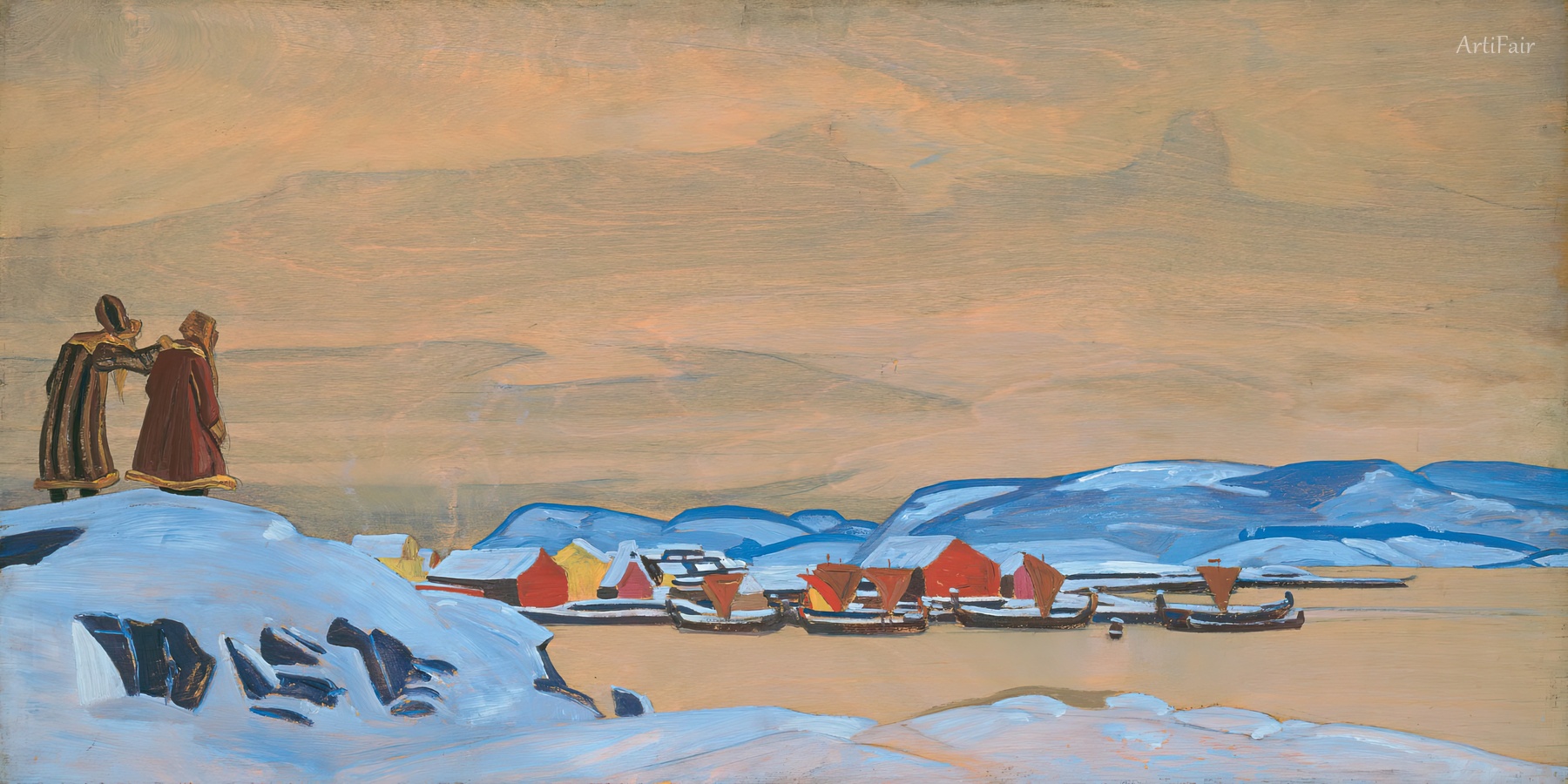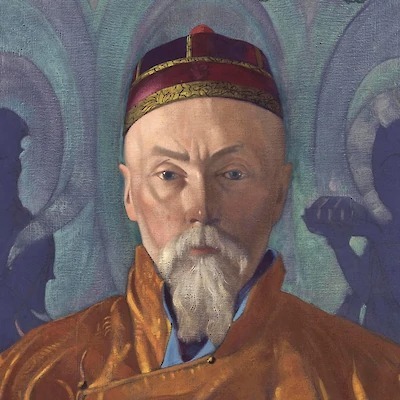

Nicholas Roerich
RU
243
Artworks
1874 - 1947
Lifespan
Artist Biography
Nicholas Roerich was a Russian painter, writer, archaeologist, and philosopher whose life and work represented a profound synthesis of art, spirituality, and public activism. Born in Saint Petersburg in 1874 to a prosperous family, he was immersed in a vibrant intellectual environment from a young age. He pursued a dual education, simultaneously enrolling at Saint Petersburg University to study law and the Imperial Academy of Arts. This multifaceted education laid the groundwork for his diverse career. Early on, he was drawn to Russian Symbolism and developed a lifelong passion for archaeology, which deeply informed his artistic vision. His talent was recognized by impresario Sergei Diaghilev, and Roerich became a key figure in the influential "World of Art" society, serving as its president from 1910 to 1916.
Roerich's artistic reputation was built on his masterful ability to evoke Russia's ancient, mythological past. His canvases, saturated with deep, vibrant colors, often depicted scenes from history and legend with a powerful, almost hypnotic quality. He achieved international fame as a scenic designer for Diaghilev's Ballets Russes. His designs for Alexander Borodin's "Prince Igor" were highly acclaimed, but his most significant theatrical contribution was his collaboration with Igor Stravinsky on the revolutionary 1913 ballet, "The Rite of Spring." Roerich co-created the scenario and designed the striking costumes and sets, which powerfully conveyed the raw, pagan rituals of ancient Russia, making him a central figure in the birth of artistic modernism. Beyond the stage, he undertook extensive architectural studies, documenting and painting ancient Russian monuments, which fueled his passion for cultural preservation.
Roerich's life took a decisive spiritual turn, heavily influenced by his wife, Helena Roerich, a gifted author and philosopher in her own right. Together, they delved into Eastern religions, Theosophy, and mysticism, developing their own spiritual philosophy known as Agni Yoga. Following the turmoil of the 1917 Russian Revolution, the Roerichs emigrated, living briefly in Finland and London before moving to the United States in 1920. In America, Roerich's work was met with enthusiasm. He established several cultural institutions, including the Master Institute of United Arts and the Nicholas Roerich Museum in New York, which aimed to unite all arts under one roof and promote a synthetic approach to culture and education.
Driven by their spiritual quest, the Roerichs embarked on an epic Central Asian expedition from 1925 to 1929. Officially presented as an artistic and scientific enterprise, the journey through India, Tibet, Mongolia, and the Altai Mountains was also a profound spiritual pilgrimage. Roerich produced over five hundred paintings of the majestic Himalayan landscapes, which he saw as a physical manifestation of the world's spiritual heights. However, the expedition was also entwined with a complex geopolitical and esoteric mission—Roerich's "Great Plan" to create a pan-Buddhist spiritual commonwealth. This ambitious endeavor attracted the attention of Soviet, British, and American intelligence, and the expedition faced extreme hardships, including a five-month detention in Tibet.
A central pillar of Roerich's legacy is his unwavering commitment to peace and the protection of culture. Drawing from his horror at the destruction wrought by war and revolution, he conceived of an international treaty to safeguard artistic and scientific institutions and historical monuments. This vision culminated in the Roerich Pact, which declared cultural artifacts to be neutral and protected property. The pact was signed in the White House in 1935 by the United States and twenty other nations of the Pan-American Union, establishing his Banner of Peace as a globally recognized symbol. Roerich spent his final years in the Kullu Valley in India, where he founded the Urusvati Himalayan Research Institute and continued to paint prolifically.
Nicholas Roerich died in Naggar, India, in 1947, leaving behind a legacy as vast and multifaceted as his life. With nearly 7,000 paintings, numerous books, and countless articles, he remains a figure of immense influence and intrigue. His work serves as a bridge between Eastern and Western thought, connecting art with science, and ethics with spirituality. While some aspects of his life remain enigmatic and controversial, his profound artistic vision and his tireless advocacy for culture as the foundation of peace have cemented his place as one of the most remarkable cultural figures of the 20th century.